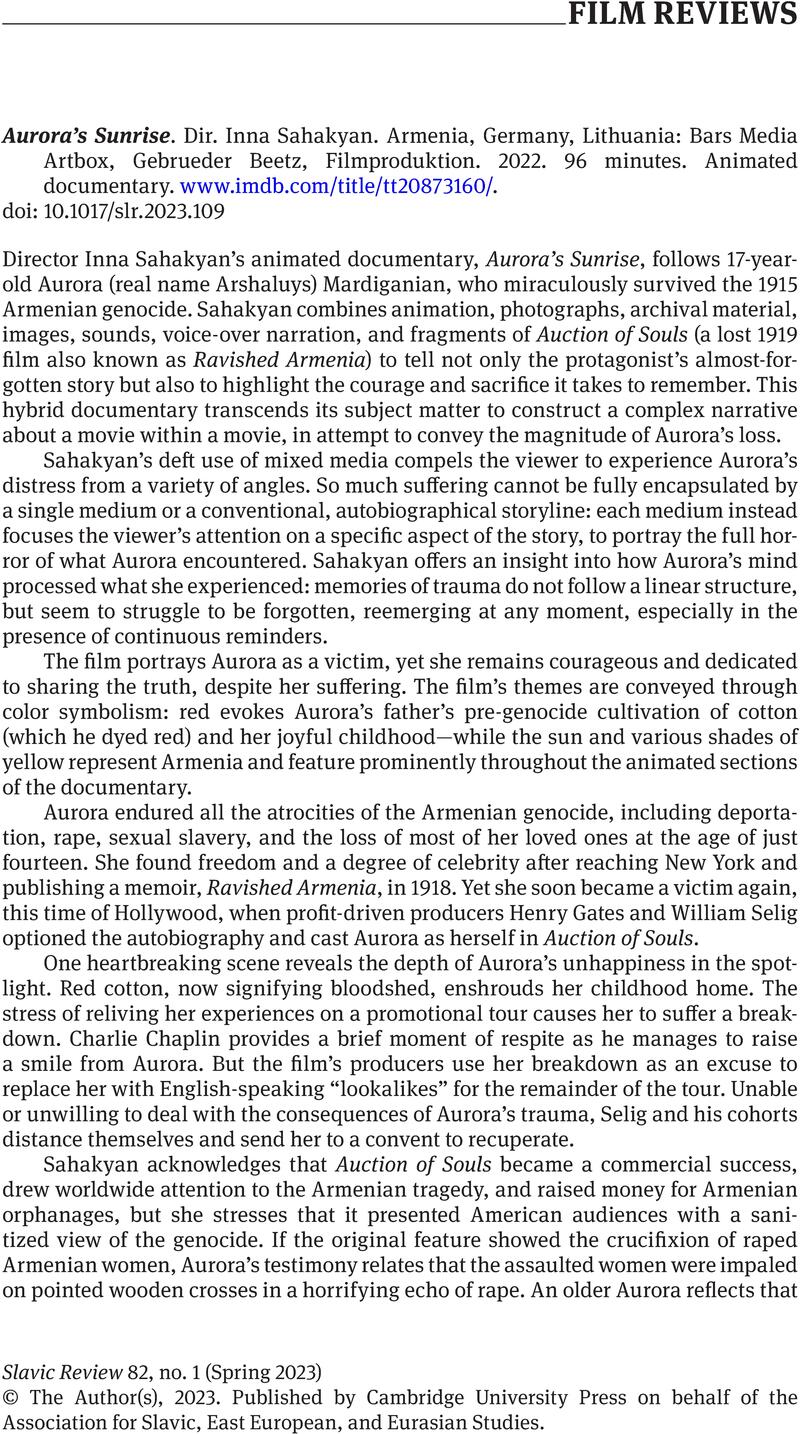No CrossRef data available.
Article contents
Aurora's Sunrise. Dir. Inna Sahakyan. Armenia, Germany, Lithuania: Bars Media Artbox, Gebrueder Beetz, Filmproduktion. 2022. 96 minutes. Animated documentary. www.imdb.com/title/tt20873160/.
Review products
Aurora's Sunrise. Dir. Inna Sahakyan. Armenia, Germany, Lithuania: Bars Media Artbox, Gebrueder Beetz, Filmproduktion. 2022. 96 minutes. Animated documentary. www.imdb.com/title/tt20873160/.
Published online by Cambridge University Press: 03 August 2023
Abstract
An abstract is not available for this content so a preview has been provided. Please use the Get access link above for information on how to access this content.

Information
- Type
- Film Reviews
- Information
- Copyright
- Copyright © The Author(s), 2023. Published by Cambridge University Press on behalf of the Association for Slavic, East European, and Eurasian Studies

